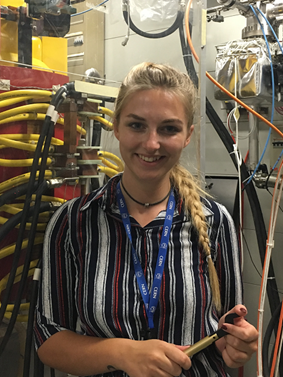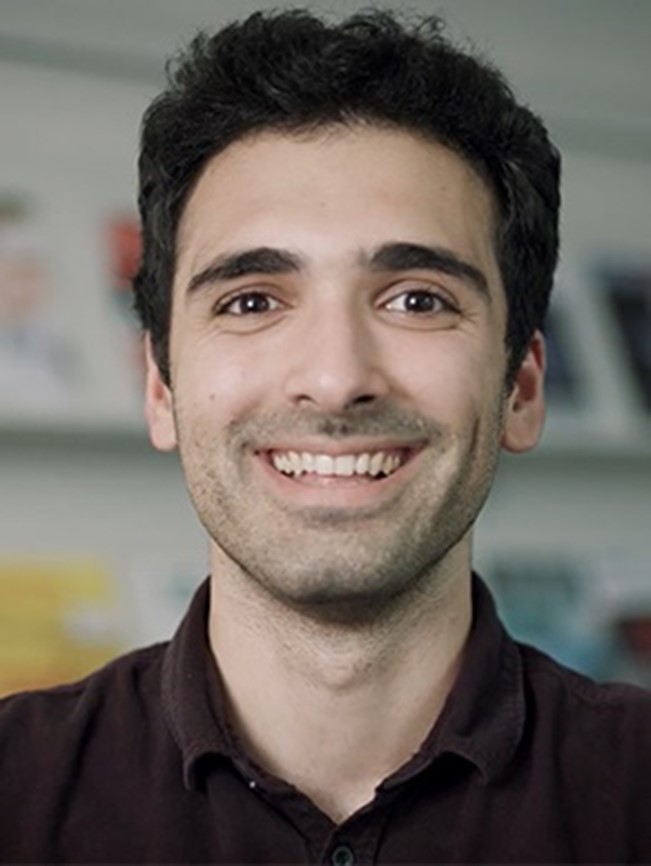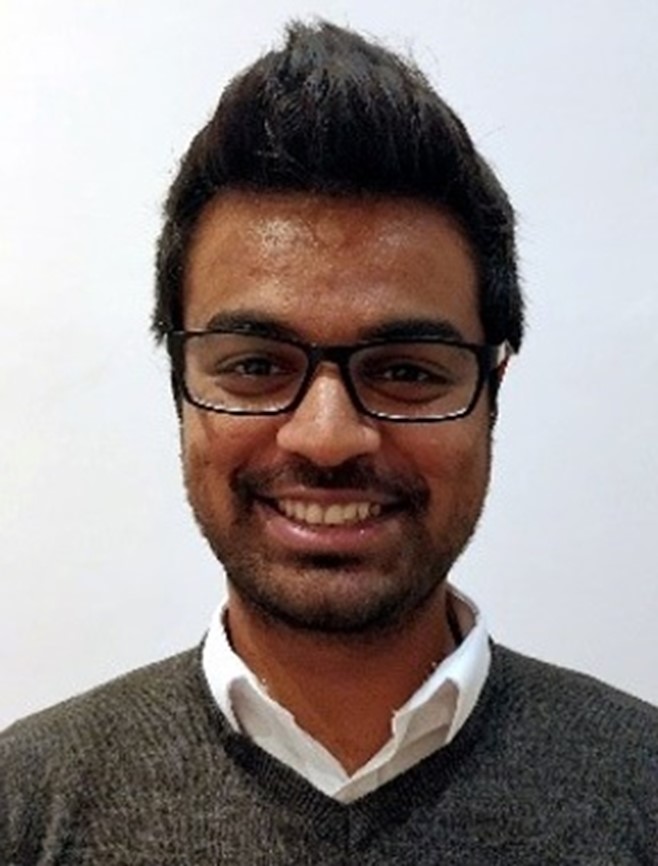The last few months have seen a number of PhD students from the Cockcroft Institute completing their thesis and taking a step forward in their research careers.

Dr Amelia Edwards from Lancaster University Engineering department passed her PhD defence on the 10th June 2022. Her supervisors were Dr Amor Dexter of Lancaster University and Dr Nuria Catalan Lasheras at CERN.
Her PhD began with six months at the Cockcroft institute followed by the remaining time spent at CERN. The thesis describes the upgrade of the first high power X-band RF test for high gradient accelerating structures at CERN, as required for the e+e- collider research program; Compact Linear Collider, CLIC. The title of the PhD is ‘X-Band LLRF Developments for High Power CLIC Test Stands and Waveguide Interferometry for Phase Stabilisation’.
Amelia’s work involved implementing significant improvements to the control system and operation of the first test stand, Xbox-1. Furthermore, a single-path interferometer was designed, commissioned and installed into a high power waveguide network. The system was used to measure phase shifts in the network which were correlated with environmental temperature. This has implications for the CLIC LINAC design where RF synchronisation is crucial in order to preserve luminosity.
Amelia remained at CERN for a post-doctoral position with Lancaster University supervised by Professor Graeme Burt.

Dr Ben Hounsell passed his PhD viva on the 30th of June 2022. His PhD was on the topic of the conceptual design of the PERLE injector. During the course of his PhD Ben spent time at both Daresbury Laboratory and IJCLab in France.
PERLE is an ERL (Energy Recovery Linac) that is currently being designed with the plan that it would be built at IJCLab. Ben investigated the electrode geometry of the electron gun and the beam dynamics of a number of different schemes for the injector. This involved simulating the electrostatics of the gun and the space charge dominated beam dynamics in the injector, whose performance was optimised using genetic algorithms.
Ben was supervised by Max Klein and Carsten Welsch from the University of Liverpool, Walid Kaabi from IJCLab and Boris Militsyn from ASTeC. He has now started a postdoc at ASTeC working on beam dynamics for RUEDI an accelerator for ultrafast electron diffraction and imaging that is currently being designed.

Dr Amir Salehi Lashkajani from the University of Liverpool successfully passed his PhD defence on the 2nd of August 2022, with Dr Hao Zhang and Prof Carsten P. Welsch as his supervisors.
Amir’s research focused on the design and optimisation of a novel beam profile monitoring technique for the Hollow Electron Lens (HEL) project of the Large Hadron Collider (LHC). This technique utilises the supersonic gas curtain technology and beam-induced fluorescence and is minimally invasive to the accelerated beam and the surrounding vacuum environment.
This project was a collaborative effort between the Cockcroft Institute, University of Liverpool, CERN and GSI. On the basis of this work, two additional monitors became part of the baseline design of the High Luminosity upgrade of the LHC (HL-LHC). His results have demonstrated the applicability of this monitor to a wide range of high-intensity, high-power accelerators, thus establishing a versatile new beam monitoring method.

Dr Thomas Primidis successfully completed his PhD on the ‘Design and optimisation of ultra-compact, high-resolution, 3D X-ray imaging systems’.
Thomas split his time between the University of Liverpool and the Cockcroft Institute, and spent several months at Adaptix’s head office and R&D facilities in Oxford. He has been supervised by Prof. Carsten Welsch and Dr Javier Resta-Lopez.
In close collaboration with Adaptix, Thomas developed detailed physics models of the company’s novel cold-cathode, 3D X-ray imaging systems that gave critical insight into system performance that is either costly or simply impossible to get with experiments. The models offered an end-to-end characterisation of X-ray source performance, X-ray beam quality, patient dose and 3D image quality.
Thomas also developed Ipioni, a computer-aided-design application that automates the design of new 3D X-ray imaging systems for Adaptix. Thomas’ work lays the foundations for further research into an X-ray source technology that can be portable, cheaper, smaller and a potential alternative to conventional X-ray tubes and has reduced the cost of its commercialisation.
Thomas is now a research associate at King’s College London, developing and maintaining EpiNav™, a software application that automates keyhole tool neurosurgery planning, helping doctors plan neurosurgeries faster, with more confidence and with fewer complications for patients.

Dr Selina Dhinsey, a member of the first cohort of students from the LIV.DAT centre for doctoral training at the University of Liverpool, gained her PhD on 27th September 2022. Her thesis called “The Modelling and Analysis of Comet Assay Data” was supervised by Professor Tim Greenshaw and Professor Carsten Welsch.
The data she analysed was taken at Clatterbridge and used to assess the efficacy of proton therapy for cancer.
Selina and has recently taken up the role of Data Coach with Multiverse, a London based company.

Dr Aravinda Perera, also from the first cohort of LIV.DAT, completed his PhD viva on 12th October 2022.
Aravinda successfully developed advanced models of beam-plasma interaction with a focus on the AWAKE project at CERN and the properties of elliptical beams. His thesis was entitled “Seeded Self-Modulation of Elliptical Beams in Plasma Wakefields”
Aravinda was supervised by Drs Javier Resta-Lopez, Oznur Apsimon and Professor Carsten P Welsch.

Dr Joe Crone, from the University of Manchester, passed his viva on 2nd November 2022 with the thesis “Design and Optimisation of High-Energy Inverse Compton Scattering Sources Driven by Multi-Pass Energy Recovery Linacs” supervised by Dr Hywel Owen, Dr Bruno Muratori, Dr Peter Williams from ASTeC and Dr William Bertsche from University of Manchester.
The thesis is concerned with the optimum design of x-ray and gamma-ray ICS sources utilising electron beams from ERLs, the comparison of ICS against other accelerator radiation production methods and potential applications of the narrowband radiation. Several different characterisation and optimisation methods were developed for ICS sources in general, with ICS source designs produced for the CBETA 4-turn ERL and the conceptual DIANA ERL.
Joe has now joined ASTeC as a member of the Accelerator Physics Group, currently working on the EPAC, RUEDI and UK-XFEL projects.
Congratulations to the new doctors!
